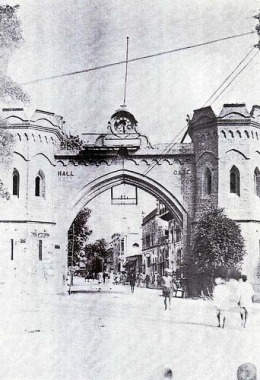My Amritsar
History of Amritsar (Guru Ki Nagari)

History of Amritsar is really fascinating. The city has been famous for puissant Sikhs and has legends attached to it. According to the legend, when the fourth Guru of the Sikhs Guru Ram Das heard about the healing powers of the pool, he ordered his son Guru Arjan Dev to erect a temple at the site. In 1588, the foundations of a city were laid which later on became an emblem of Sikh culture and history. The city came to be known as Ramdaspur or Guru Ram Das di Nagri (city of Guru Ram Das).
The Temple compound was completed in 1601. Historians say that Mughal emperor Akbar also donated the land close to the temple after paying off the local Jat farmers. After the completion of the Temple, Guru Granth Sahib (Also called Adi Granth), holy book of Sikhs was installed in the Temple. The Temple became popular as Harmandir (Temple of God).
The traders including Khatris and Aroras were called by Guru Ji to settle in the vicinity of the Gurudwara. A new town grew up with the arrival of all these businessmen. Golden Temple was plundered many times but by God's grace the Temple got much more offerings from its devotees that helped in its reconstruction.
History of Plunders
Ahmad Shah Durrani forayed the town in the late 18th century. Maharaja Ranjit Singh donated 100 kilos of gold for the temple and rebuilt the town. The Temple got its name from the golden plating on the outer walls.
Amritsar was always threatened from both Muslim and Hindu rulers. Guru Hargobind bastioned the city and started accepting offerings in the form of weapons for the security of the Temple. After accession to the throne Salim (younger son of Akbar) asked Guru Arjan Dev to accept Islam. Guru refused and got killed by Salim who came to be known as Emperor Jahangir.
In India's history of freedom struggle, Amritsar has a significant place. Due to the protests against Rowlatt Act, British General Dyer imposed a ban on holding meetings. In the Jallianwala Bagh, without any warning he open fired thousand of innocent men, women and children who gathered to celebrate the anniversary of the birth of the Khalsa panth (order of the Khalsa).
Post independence era also brought problems for Ambarsarias (people inhabiting Amritsar). It was a fight between the Indian administration and Sikh militant groups. Sant Jarnail Singh Bhindranwale demanded a separate nationhood for Sikhs. In June 1984, a heavily armed Bhindranwale marched towards Golden Temple. The army thinking that they were inside resorted to firing on the Akal Takht. Bhindranwale got killed along with many of his followers. The Temple was again rehabilitated to its former glory.
The Temple compound was completed in 1601. Historians say that Mughal emperor Akbar also donated the land close to the temple after paying off the local Jat farmers. After the completion of the Temple, Guru Granth Sahib (Also called Adi Granth), holy book of Sikhs was installed in the Temple. The Temple became popular as Harmandir (Temple of God).
The traders including Khatris and Aroras were called by Guru Ji to settle in the vicinity of the Gurudwara. A new town grew up with the arrival of all these businessmen. Golden Temple was plundered many times but by God's grace the Temple got much more offerings from its devotees that helped in its reconstruction.
History of Plunders
Ahmad Shah Durrani forayed the town in the late 18th century. Maharaja Ranjit Singh donated 100 kilos of gold for the temple and rebuilt the town. The Temple got its name from the golden plating on the outer walls.
Amritsar was always threatened from both Muslim and Hindu rulers. Guru Hargobind bastioned the city and started accepting offerings in the form of weapons for the security of the Temple. After accession to the throne Salim (younger son of Akbar) asked Guru Arjan Dev to accept Islam. Guru refused and got killed by Salim who came to be known as Emperor Jahangir.
In India's history of freedom struggle, Amritsar has a significant place. Due to the protests against Rowlatt Act, British General Dyer imposed a ban on holding meetings. In the Jallianwala Bagh, without any warning he open fired thousand of innocent men, women and children who gathered to celebrate the anniversary of the birth of the Khalsa panth (order of the Khalsa).
Post independence era also brought problems for Ambarsarias (people inhabiting Amritsar). It was a fight between the Indian administration and Sikh militant groups. Sant Jarnail Singh Bhindranwale demanded a separate nationhood for Sikhs. In June 1984, a heavily armed Bhindranwale marched towards Golden Temple. The army thinking that they were inside resorted to firing on the Akal Takht. Bhindranwale got killed along with many of his followers. The Temple was again rehabilitated to its former glory.
